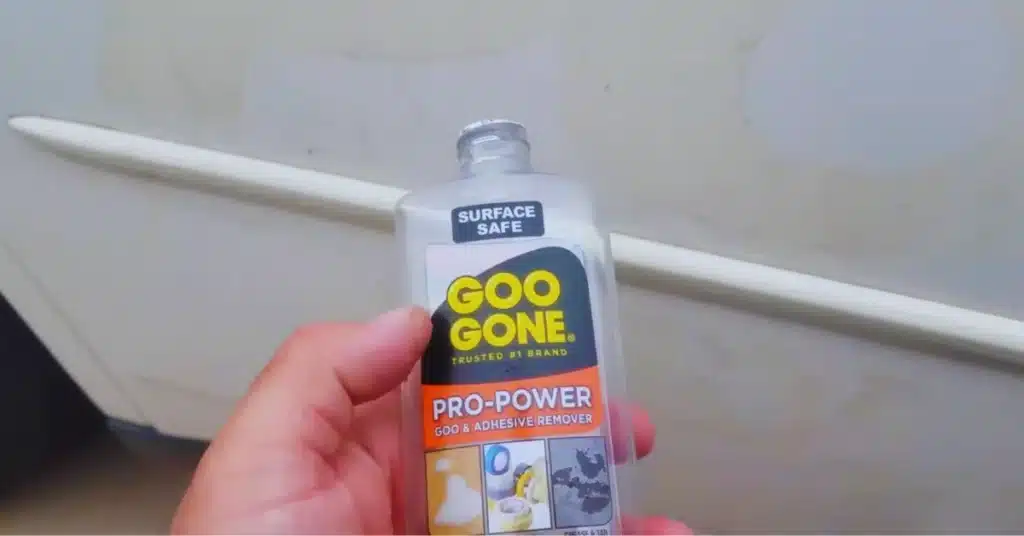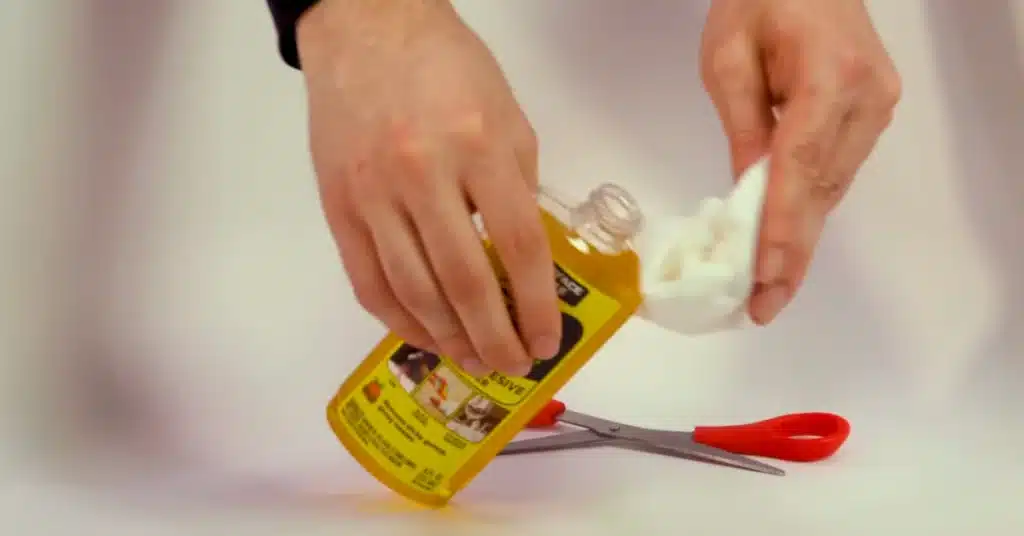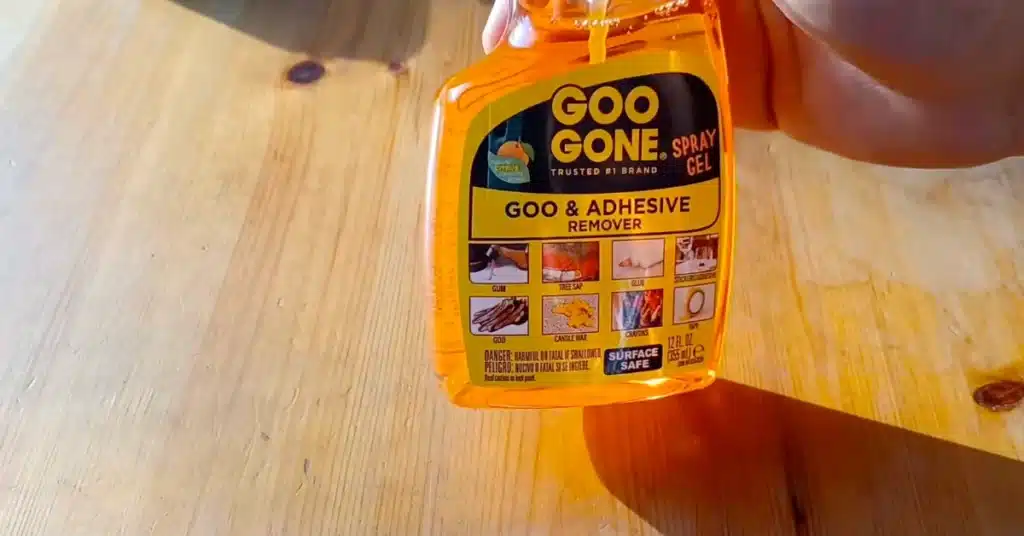If you want one product for all kinds of stains and adhesive residue removal, Goo Gone is the one. You must only know how to use Goo Gone on cars, clothes, wood, and glasses and follow the process.
Well, Goo Gone is a surface-safe adhesive remover to remove gummy, gooey, sticky mess. You can use it on wood, metal, glass, ceramic, fabric, carpet, upholstery, and more.
See the process of how you can use this product on multiple materials.
Read More: How to Open Goo Gone Bottle?
How to Use Goo Gone on Cars?
Goo Gone is a powerful adhesive remover on several materials, as well as car paints. It is a safe adhesive remover that removes glue, dirt, tape residue and more effortlessly.
Let’s see how you can use the Goo Gone adhesive remover on car paints.

Step 1: Testing First
The first thing you must do is to test the product in a small area. Make sure you always start with a small amount of product. To do that, you need a soft cloth.
Take some of the product on the cloth, apply it to the area, and leave it for a few minutes. After that, wipe it out to properly clean it with a clean cloth. Check if the product is working or not.
If it doesn’t, try leaving it for a longer time. And if it does, you can use it on the entire surface.
Read More: How to Get Rid of Goo Gone Smell?
Step 2: Apply The Product
Once the product is verified, it’s time for the application. You can apply it with a cloth or spray it on the surface.
As it comes in a liquid form, it will be easier to spray the product on the surface and then let it sit for some time. After that, wipe that out properly with a clean cloth.
You may need to repeat the process several times to remove any residue. It is recommended to apply the spraying method on car paints as it is easy to use and effective for cars.
Also, you can avoid pouring the product excessively. So, you should use the spraying technique if it’s convenient.
Step 3: Scrapping
After letting it sit for some time, it’s time for scrapping. Use a plastic scrape as it’s less harmful to the car paint. Scrapping is effective if only soaking isn’t enough.
You should take the scrapper and gently scrape the residue away. You need to give a little force, but make sure you are gentle enough. Don’t do it harshly, or it will scratch the paint.
After scraping off all the residue, properly clean the area with a soap and water mixture. Clean it with a dry cloth, and that’s enough.
Read More: Goof Off Vs. Goo Gone
How to Use Goo Gone on Clothes?
Goo Gone is good for clothes as well. It can remove any glue residue from the fabric easily. To use it best, get through all the steps to use Goo Gone on clothes.

Step 1: Apply Goo Gone
Directly apply Goo Gone adhesive remover on the place where it needs to be cleaned.
You can also take a clean and dry cloth and pour water. With the soaked cloth, wipe out the residue by applying in a dabbing motion.
Step 2: Soaking
Another method is soaking. Take the cloth and soak the stained area with the adhesive remover well. Leave it like that for a few minutes.
Step 3: Rinse And Wash
After that, rinse the area well with water. Use soapy water for a better cleaning. Another way is to wash the fabric thoroughly with detergent. Read the care label of the material, then wash accordingly.
After washing, let it air dry for a perfect cleaning.
Read More: Is Goo Gone Flammable?
How to Use Goo Gone on Wood?
Goo Gone is a perfect solution for many materials, including wood. To remove adhesive residue from wooden surfaces Goo Gone can do it quickly. Check out the detailed process below.

Step 1: Pour The Goo Gone
Pour some of the product on the surface. Make sure to cover the glue on the area so that it helps to soak better.
Step 2: Soak
Now, keep it for around 3-5 minutes to soak the place properly. You can control it longer if the glue isn’t coming off.
Step 3: Wipe
After that, wipe the place out with a dry cloth. If it doesn’t help, try using a plastic scraper to scrape the area gently. Give a bit of force, and you can easily remove the glue.
Step 4: Wash
The final step is to wash the surface well. Take a cloth and soak it with a wood cleaner or simply soapy water. Wipe out the area well to properly clean it.
How to Use Goo Gone on Glasses?
When it’s about glass, you can use Goo Gone. From removing the toughest glue stain, this product works just fantastic. See the steps to make perfect use of it.
Step 1: Apply Goo Gone
You can directly spray the Goo Gone adhesive remover on any glass surface. Going with the spraying method makes the entire process easier. Spray all over the area where it needs to be cleaned.
Step 2: Soak
After adequately applying the product, leave it for a few minutes for soaking. When you soak the area properly, it helps to loosen the glue and come out without damaging the surface. So, take time to soak for a perfect cleaning.
Step 3: Wipe
Once it’s soaked well, wipe the surface with a clean cloth. If it doesn’t remove all the adhesive, try scrapping it with a card or old razor blade.
Step 4: Wash
For the final cleaning, wash it thoroughly with warm water and soap. A glass cleaner is also a good option and safe too.
Read More: How Does Goo Gone Work?
What Types of Stains Can Be Cleaned With Goo Gone?
When discussing using Goo Gone adhesive remover for various projects, you should know you can easily do it because of its incredible versatility. Goo Gone removes different types of stains, sticky residue, and more.
To remove glue, gum, tape, chewing gum, wax, hot glue, wallpaper, grill grates, road tar, dryer cleaning, putty, bug smashes, crayons, ink, markers residue, food grease, makeup, and more, Goo Gone can do it all.
If you want a good-quality adhesive remover for adhesives, grease, and more, this product is the best for any stain.
Last Opinion
Now that you know everything about Goo Gone and how to use Goo Gone on cars, clothes, wood, glasses, you can follow the steps of the methods and get a beneficial outcome for sure.
All you need is to be patient. Trust the process, and you can do it all. The materials are different, but Goo Gone can deal with it alone.
Get a Goo Gone remover and say goodbye to stains!

